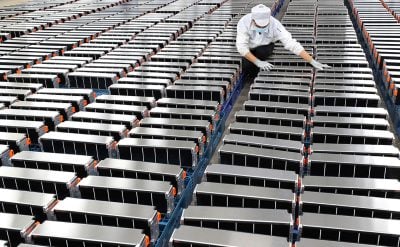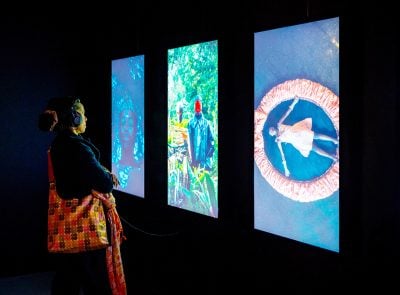For many years, Southern African hydrocarbons meant just one thing: Angola. Yet although the state has doubled its oil production over the past five years, it is not alone in offering attractive oil and gas prospects.
Mozambique is rapidly emerging as a new and barely explored gas frontier, while Namibia’s offshore Kudu gas field remains to be tapped.
Unconventional gas reserves in Botswana and South Africa offer a great deal of potential, although all the other member states of the Southern African Development Community (SADC) have a long way to go before they can challenge Angola.
Total began production on its new Pazflor project offshore Angola in August. Oil fields on the venture, which have estimated total reserves of 590m barrels, lie in water depths of between 600 and 1,200 metres and so add to Angola’s growing list of deepwater and ultra-deepwater projects.
A spokesperson for Angola’s state-owned oil and gas company Sonangol said: “The Pazflor project is made up of an immense network of undersea facilities, the most complex ever installed in Angola.”
Standard oil rigs cannot be used in such deep water because they cannot be fixed to the sea bed and so oil companies use ships known as floating, production storage and offloading (FPSO) vessels to tap deepwater fields.
Oil is pumped up into FPSOs and then stored until it can be transferred to waiting oil tankers for distribution. Although expensive, such operations remove the need to pipe oil onshore for shipping and allow oil to be tapped in water depths that would otherwise be beyond conventional oil production methods.
According to Total, the FPSO on Pazflor is the biggest in the world, measuring 325 metres by 62 metres with a weight of more than 120,000 tonnes. With storage capacity of 1.9m b/d, it could hold Angola’s entire production for a single day.
Production will be gradually increased to 220,000 b/d on 49 wells. Total E&P Angola operates the project with a 40% stake, with the remaining equity held by Statoil (23.33%), Esso Exploration Angola (20%) and BP Exploration Angola (16.67%). Most of the world’s biggest oil companies are involved in one jumbo Angolan oil project or another.
As with Pazflor, many of Angola’s deepwater projects have been designed to enable the development of a large number of smaller fields. Esso Angola is in a similar position on deepwater Block 15, where it already produced 500,000 b/d but plans to increase output by 100,000 b/d through its Kizomba Satellites project. The US firm holds 40% equity in the venture, alongside BP Exploration Angola Ltd (26.67%), Eni Angola Exploration (20%) and Statoil Angola (13.33%).
LNG plan for Rovuma
On the opposite side of Southern Africa, fellow Lusophone state Mozambique had not been considered of much interest to the oil and gas industry until fairly recently. However, the development of gas fields in the south of the country to supply Sasol’s synthetic fuel plants in South Africa has been followed by a series of sizeable finds offshore the north of Mozambique.
A consortium led by US firm Anadarko Petroleum Corporation made the country’s first deepwater gas discovery in the Rovuma Basin close to the Tanzanian border last February.
Subsequent exploration wells have found more gas in the same area, prompting Anadarko to estimate reserves on the find at six trillion cubic feet, generally more than sufficient to justify the construction of a single gas liquefaction system, usually known as a train. Most recently, in August, the Barquentine 2 appraisal well encountered 70 metres of net gas at a depth of 4,100 metres and in 1,650 metres of water.
KBR and Technip have already been awarded the pre-FEED, or front end engineering and design, contract on the project. The final investment decision on the project is due to be taken in 2013 but the consortium is already assessing potential coastal sites for the LNG plant. It is also beginning the process of securing environmental impact assessments and seeking out LNG sales contracts.
The Mozambique plant would be the first in East Africa and the first anywhere on the African coast between Soyo in Angola and the Egyptian Mediterranean coast. It would therefore be ideally located to supply the growing economies of South and East Asia, including India and China, which are both forecast to greatly increase their gas imports over the next few years.
There is a limited market for gas in northern Mozambique because of the low population density and very limited industrial activity. As a result, the most obvious commercial outlet for the gas would be in the form of liquefied natural gas (LNG).
Gas is cooled to a liquid to reduce it to a tiny fraction of its original volume and to enable it to be shipped in LNG carriers to more lucrative markets, where it is regasified for use.
At present, the only operating LNG plants on the continent are in North Africa, Nigeria and Equatorial Guinea, while another is being developed in Angola.
The US company operates the concession with 36.5% equity, alongside partners Bharat Petroleum Corporation Limited (BPRL) Ventures Mozambique (10%) and Videocon Mozambique Rovuma 1 (10%), both of India, Cove Energy Mozambique Rovuma Offshore (8.5%) and Mitsui E&P Mozambique Area 1 (10%).
Mozambique’s state-owned oil and gas company, Empresa Nacional de Hidrocarbonetos (ENH), carries 15% interest through the exploration phase.
Development costs on the project are estimated at $4bn, which will be provided by the consortium members in line with their equity holding.
Want to continue reading? Subscribe today.
You've read all your free articles for this month! Subscribe now to enjoy full access to our content.
Digital Monthly
£8.00 / month
Receive full unlimited access to our articles, opinions, podcasts and more.
Digital Yearly
£70.00 / year
Our best value offer - save £26 and gain access to all of our digital content for an entire year!
 Sign in with Google
Sign in with Google 


